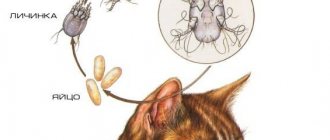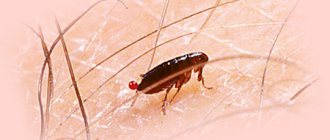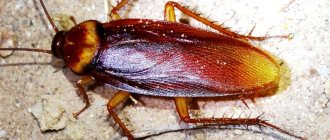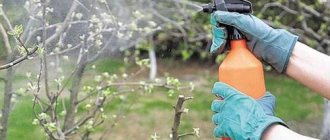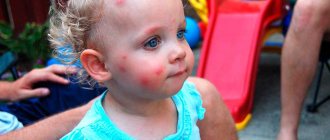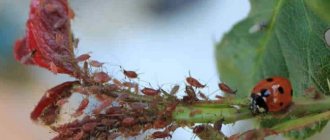What actions should be taken if a tick bite occurs. If it is not possible to see a doctor, how to remove the blood-sucking substance from the wound. How to properly treat a bite and what products to use. What to do after removing a tick and where to go.
When a person discovers a tick on his body, action must be taken, but it is very important not to make mistakes that can lead to serious consequences.
Next, we will consider in detail what to do in the event of a parasite attack, how to treat a tick bite, where to go, how to avoid serious consequences and avoid mistakes.
First aid for a tick bite
A tick bite is a dangerous problem that can lead to severe illness and death. The likelihood of a parasite attack increases during the warm season. It is in late spring, summer and early autumn that patients with suspected encephalitis, borreliosis and inflammatory processes peak in visiting medical clinics.
Only the correct algorithm of actions, pre-prepared preventive measures and rejection of untested folk remedies will help the patient reduce the risk of disease transmission. But when bitten, it is very high, especially if the parasite bit in a region where outbreaks of encephalitis are often observed.
Before you think about treating a bite site, you need to get reliable information about the signs of a bite and treatment methods. Experts report that the bite may not be noticeable at first. The parasite releases saliva containing anesthetic substances into the victim's blood. They eliminate pain, and for a long time, until the onset of inflammation, the patient may not feel discomfort. It's better to rely on other symptoms:
- feeling of weakness;
- heat;
- aching joints;
- loss of appetite;
- drowsiness.
Patients with hypersensitivity at the site of the bite may develop dermatitis. Most often, after a tick infestation, a lump appears with a dark dot in the middle (if the parasite has already fallen off). If the insect continues to drink blood, you can notice it by its swollen abdomen, similar to a large pea.
Folk remedies for tick bites and other insects
When treating with folk remedies, monitor your condition . If it worsens, you should immediately consult a doctor. Traditional medicine is not enough to treat serious diseases. They can be used as an adjunct to drug treatment, but only with the approval of the attending physician. Bites from insects such as mosquitoes and midges usually do not require medical attention. Another thing is ticks; their bites can cause serious illnesses that can be fatal.
Traditional methods for mosquito bites
Traditional medicine methods are aimed at repelling insects and eliminating the discomfort caused by itching, blisters and inflammation at the site of the bite.
To repel mosquitoes and create a “barrier” for insects, lubricate the skin:
- Fish oil.
- Clove oil mixed with cologne 1:10.
- Table vinegar with wormwood juice.
To relieve discomfort:
- The skin is lubricated with baby cream or any antiseptic.
- A collection is prepared from an equal amount of young oak bark, peppermint leaves, flowers and leaves of St. John's wort. Add 200 ml of water to a tablespoon of the mixture and boil over low heat for 15 minutes. Lotions are made from the decoction.
- Make lotions using a soda solution prepared at the rate of 1 teaspoon of baking soda per glass of water.
- Lotions made from an aqueous solution of ammonia (100 ml of water mixed with 20 ml of alcohol), vodka or cologne.
Folk remedies for bee and wasp stings
A wasp sting causes sharp and severe pain that lasts for a long time. Medical intervention will be required if a person is allergic to the bites of these insects. When stung by bees and wasps, perform the following actions:
- The sting is removed; if it is not visible, there is no need to squeeze it out.
- Wash the bite site with alcohol or soap and water.
- Apply ice or cold pack.
- In case of an allergic reaction (weakness, rash, difficulty breathing, swelling of the throat or mouth), you should immediately consult a doctor.
Pain and redness are relieved by:
- Juice from parsley leaves.
- Lotions of crushed fresh plantain and yarrow leaves.
- Cool olive oil.
- Applying a fresh bay leaf.
- Compress of crushed onions.
- The pulp of aloe leaves.
- Lotions from a decoction of tansy.
- By applying washed dandelion roots.
Traditional medicine methods for tick bites
In the warm season, especially in spring and the first half of summer, ticks become more active. Their bites are very dangerous. Encephalitis ticks pose the greatest danger. Attacks by blood-sucking insects can be prevented by using:
- Hats and closed clothing with long sleeves.
- Clove essential oil;
- A mixture of aromatic oils (clove, eucalyptus, rosemary, mint, fir). Three components are enough.
- Balm “Star”.
The product is applied to exposed areas of the body . After visiting the forest, you must carefully examine your body and take a shower.
If the tick does stick, do the following:
- Pour vegetable oil into the cap of a plastic bottle, turn it over at the location of the tick and press it to the body. This will stop the insect from entering, it will suffocate and fall out of the wound.
- Melted wax is poured over the tick site.
- Remove the insect using tweezers with tips concave inward. The grip is made as close to the skin as possible and removed using rotational movements. The wound is treated with any antiseptic.
- Remove the tick with a thread, bandaging it near the surface of the body. Remove with oscillatory movements, alternately pulling up the ends of the thread.
Before removing the insect, the depth of its penetration is assessed. It is not recommended to remove it yourself if the head is immersed in the body. It is necessary to neutralize the insect and contact a medical facility.
The use of folk remedies for midge bites
Before leaving for nature, exposed areas of the body are treated with various essential aromatic oils. In case of bites, different methods and available means are used:
- Cold objects are applied to the bitten areas.
- Press down on problem areas.
- Wash the itchy areas with cold water and soap (preferably laundry soap).
- Treat the skin with vodka or alcohol and make a vodka compress.
- Wash or generously wipe the surface of the skin with a high concentration soda solution or soda slurry.
- Apply a compress of crushed plantain leaf.
- Wipe the skin with lemon juice or apply a thin circle of lemon.
- Make a lotion from a concentrated saline solution.
What can you do at home?
A tick has attached itself: what to do to avoid negative consequences? Infectious disease specialists recommend immediately going to a medical clinic to have the parasite checked. Specialists will examine him and find out whether he could have suffered any disease.
Even before going to the doctor, the insect is removed. This reduces the likelihood of viral infection. This phenomenon is explained by the fact that some diseases are transmitted not through saliva, but through tick feces (Lyme disease). The sooner you remove an insect from your skin, the lower the risk that it will infect a person with one of the dangerous infections.
You need to pull out the tick by grasping the head with tweezers or a special device for removing ticks. You cannot jerk your hand sharply. Using light circular movements you need to unscrew the parasite like a screw. After this, be sure to place it in a jar or test tube and send it for analysis. You must not squeeze the abdomen, tear the body away from the head, or leave the head of the insect and its proboscis under the skin.
If you cannot pull out the parasite, you should not use oil or alcohol to suffocate it. A common misconception is that a tick will crawl out when it feels short of air, leading to an increased risk of infection. The patient applies oil to the bite site, and the parasite, suffocating, dies and releases even more dangerous substances into the blood. Therefore, if the parasite is stuck, there is no need to try to squeeze it or suffocate it. It is important to treat the wound with a disinfectant and go to the doctor.
If the proboscis remains in the skin, you can try to pry it off with a needle. If unsuccessful, treat the wound with iodine and go to the doctor. The specialist may cut a small area of skin to remove the foreign object.
After the parasite has been submitted for analysis, loved ones need to constantly monitor the condition of the bitten person. Some diseases transmitted through contact with the parasite develop within a few hours. Others may become active only after a few weeks. Therefore, it is very important to record all strange symptoms within 1-1.5 months after the bite. If you have a fever, fever, memory problems, aching joints or unreasonable pain in the heart, you should see a doctor.
How to remove a tick?
This stage is very important. The thing is that if the parasite’s body ruptures, it will secrete poisonous saliva for a very long time, remaining in the human skin. This can lead to serious complications, including wound suppuration. Here the bite site will have to be treated very carefully for the wound to heal. Most likely, a scar will remain in this place.
Therefore, it is very important to proceed with caution. Ticks cannot be removed with vegetable oil or insecticides. Once the parasite begins to choke, it will release even more poison into the blood. Here a serious allergic reaction is guaranteed.
Simply pulling the tick's body is also unacceptable: it could simply tear. You need to be very careful with the method of extracting the parasite using a thread. The most effective way is to use tweezers. They need to grab the body close to the head, and then begin to twist the parasite clockwise. You can use any tweezers, but the best ones are those sold in pharmacies and specialty stores.
A person should not be afraid. He won't even feel pain. As a rule, all sensations are limited to only a pulling sensation when the proboscis comes out of the skin.
Even at the stage of preparation for removing the parasite, you need to prepare a container in which you then need to put the tick. It must close tightly so that the insect cannot get out and find a new victim. Next, you should treat the wound and send the bloodsucker to the laboratory for research.
If you still cannot remove the parasite correctly, you will have to take a disinfected needle and remove the remains of the tick from the wound. This will be a painful procedure, and the risks of complications are very high. After the wound is completely clean, it needs to be treated with an antiseptic. The remains of the tick should still be taken to the laboratory, although research on living individuals is much easier.
How to treat a bite site
A tick bite and its treatment at home is a controversial issue. Some experts advise immediately going to the doctor, others say that it is advisable to treat the wound yourself. It would be optimal to first treat the bite site, and then still go for an examination to a specialist.
To stop the spread of infection and viruses, you can use one of the following means:
- chlorhexidine;
- peroxide;
- iodine 5%;
- brilliant green;
- medical alcohol.
Allows the use of regular alcohol, but only if there are no specialized products at hand. For example, vodka will do. Fermented drinks (beer, wine) should never be poured onto the wound.
To prevent dangerous particles from getting into the lump in the future, you should tape it or lightly bandage it when you go to the doctor. After this, the specialist will decide whether it is worth continuing to cover the bite, or whether it is better to let it air dry faster.
Folk remedies are not used for processing. Their use will only worsen the situation and can lead to the development of inflammation.
General rules
Most often, when bleeding, first aid must be provided very quickly, so knowing how to properly treat a wound can save a person’s health, and sometimes life. Regardless of what type of injury was received, the following rules must be followed:
- the affected area must be completely immobilized;
- Before carrying out the procedure, hands should be washed thoroughly;
- It is advisable to use disposable medical gloves;
- the treated area should be immediately covered with material to prevent bacteria from entering there;
- wound disinfection should be carried out only with sterile materials and instruments;
- When initially treating a wound, it is better not to use any ointments or powders, as this can lead to an increase in healing time.
If there are no sterile materials nearby and the victim needs emergency care, the material can be ironed with a hot iron and used to cover the wound. Wound treatment is usually done to prevent bacteria from entering the wound site. But in cases where the bleeding is too severe, perhaps even threatening the life of the victim, first of all everything must be done to stop it. Only in this case is it even possible to neglect the sterility of the material.
Treatment of the wound after injury should be carried out as soon as possible. As a last resort, the wound can be disinfected within the next 6 hours after the injury.
What pills can you take?
Many people are interested in what to take after a tick bite. There are tablets that can be taken immediately to prevent the development of encephalitis. Typically, specialists administer injections based on immunoglobulin, but there is a more modern development - tablets with a base of iodantiprine.
These drugs are stored at room temperature, so you can take them with you to the dacha or on a hike. The tablets allow you to develop immunity against tick-borne encephalitis in 12–24 hours. It increases the production of interferon, which helps the body cope with the virus. If there is a risk of contracting encephalitis, it is recommended to constantly take the drug for the entire time that a person is in nature (for example, every day of a hiking expedition).
The drug is convenient to take on the go; it is approved for adults and children over 12 years of age. However, in some patients the active substance causes allergic reactions.
Prevention after a tick bite necessarily includes a visit to the doctor, even if the patient took a special pill within the first hours.
What symptoms should you pay attention to?
People are especially worried about the timing of the onset of symptoms of infection. The appearance of the first signs can be observed within a few hours. But, since the incubation period of the disease lasts a long time, a person is at risk for about another month. Therefore, you should carefully monitor your health during this period. The most common symptoms when a tick infects a person during a bite are:
- heat;
- drowsiness and lethargy;
- erythema and swelling;
- nausea;
- lack of air;
- body aches;
- allergy.
The bite site appears reddened - this is a normal allergic reaction. However, a red spot that grows up to 12 cm may be a sign of Lyme disease. It can appear either after 3 days or after a week.
Encephalitis
The development of pathological microbes begins with a jump in temperature to extremely high levels, pain in muscle tissue and unbearable headaches. There is a painful sensitivity of the eyes to light, hyperemia of the upper parts of the body and mucous membranes. An increase in temperature can be observed within 1-7 days.
There are several forms of the disease, in which auxiliary symptoms are added to the above symptoms:
- with the meningeal form, nausea and vomiting, pain in the eyes, and stiff neck appear;
- with meningoencephalitis - swelling of the upper and lower respiratory tract, paresis of the muscles of the tongue and face;
- with polyradiculoneuritis - cramps and muscle pain, paralysis of the whole body (most often leading to death);
- with two-wave - orientation in space decreases, hallucinations occur.
Lyme borreliosis
With borreliosis, erythema (a rash in the form of circles) forms at the site of the bite, which can move throughout the body and grow up to 60 cm in size. An erythematous rash can cause pain, burning, cyanosis of the skin and swelling. The temperature of the spot feels significantly higher than the surrounding skin. Other symptoms that can be confused with the flu include fever, lethargy, headaches and muscle pain. Abdominal discomfort, insomnia, and impaired hearing perception occur less frequently.
Tularemia
At the initial stage, the symptoms of tularemia are difficult to distinguish from other forms of the disease. Fever and intoxication appear. Characteristic symptoms include headaches, weakness, cold sensations, muscle pain and hyperhidrosis. Sometimes there is low blood pressure, bradycardia, as well as an increase in the size of the spleen and liver (however, this will be noticeable during the examination). These signs last for 2-3 days.
Patients with tularemia undergo external changes:
- pastiness and swelling of the face;
- redness of the skin on the face;
- conjunctivitis;
- in severe forms of the disease, blueness of the eyelids, lips, and lobes is observed;
- petechial rash on the oral mucosa.
A characteristic sign of tularemia is enlarged lymph nodes, the size of a walnut.
Coxiellosis (Q fever)
When a person falls ill with coxiellosis, he complains of symptoms characteristic of the flu:
- headache;
- increase in body temperature up to 40 degrees;
- increased sweating;
- lethargy;
- cough with a small amount of sputum, sometimes interspersed with blood;
- feeling of discomfort in the eyes.
Q fever differs from the flu in the absence of a runny nose and sore throat, and an increased temperature is observed for 3 weeks.
After 2-5 days after a tick bite, these symptoms include the following:
- swelling of the neck and face, as well as hyperemia;
- decreased heart rate;
- decreased appetite;
- roseola rash;
- coating on the tongue;
- slight decrease in blood pressure.
Tsutsugamushi
A constant symptom of fever is maculopapular rashes on the skin, covering the entire body. Also, at the very beginning of the disease, the patient experiences redness of the skin and swelling of the face. At the site of the bite, you can observe a slight hyperemia, which later develops into an ulcer, tripled in size. After some time, these signs are complemented by deterioration in the functioning of internal organs. Blood pressure decreases, tachycardia appears, the central nervous system is affected, and bronchitis and pneumonia can develop.
What does a tick do when it drinks blood from a person?
The tick goes through several stages of development, from larva to adult. The larvae (which look almost identical to the adult parasites, but differ in size by about 1 mm) rarely bite humans. Much more often, bites are made by nymphs, an intermediate stage of development between a juvenile and an adult, and adult females or males.
It is important to understand that any tick, regardless of its stage of development, remains on the body for a very long time. At first, for several hours he can look for a place where he can bite into the skin and begin to suck out blood. Then, having gained access to the blood vessels, the insect is firmly attached to the victim’s body and can remain there for a week.
During this time, the parasite will drink blood and significantly increase in size. Female ticks usually reach a size of 3.5-4 mm, and after feeding on blood they can swell up to 1 cm in diameter. Males are slightly smaller. They are saturated in just an hour, so the patient may not detect the bite of a male ixodid tick.
After a few days or a week, the parasite pulls out its proboscis and falls off the person. Sometimes the insect falls under its own weight without having time to pull out its proboscis. In this case, both it and the head may remain in the body and lead to inflammation.
Under no circumstances should you wait until the insect leaves on its own. During this time, dangerous microorganisms and viruses can enter the body through the insect's salivary glands. The longer the contact with blood, the higher the chance of infection.
First aid
Having discovered a parasite on your body, you must urgently provide first aid to yourself, namely, remove the tick from your body.
Ideally, this should be done by a medical professional who, equipped with an antiseptic and tweezers, will quickly and painlessly solve your problem. In the hospital, the patient is provided with a number of preventive measures to ensure that complications after an insect bite do not follow. So, in the hospital, the tick is immediately submitted for examination to a laboratory to identify dangerous infectious diseases. A tick bite on a person is immediately treated with hydrogen peroxide or medical alcohol. On the same day, the person is prescribed a three-day course of immunoglobulins. These drugs help stop the growing infection and prevent it from spreading further through the blood vessels.
The bite site is treated with everything you have at hand - peroxide, alcohol, cologne, vodka. Once a tick has been removed from the skin, it should not be thrown away. Carefully place it in a sealed bag or matchbox and give it to the clinic for examination. This way, you will know for sure whether you should have worried or resorted to any treatment in the future.
What tablets can help with a tick bite?
If the infectiousness of the tick is confirmed and you need urgent treatment to stop the development of encephalitis. The following drugs are prescribed for treatment:
- Piperacillin is a drug used in cases of hypersensitivity to other drugs and during pregnancy. It is administered intravenously several times a day. The use of the drug allows you to eliminate the consequences of an insect bite.
- Levomecitin - used 3-4 times a day. Often prescribed in combination with other drugs. The standard course of treatment is 10 days. The individual dose and method of administration is calculated for pregnant women and children with kidney and liver problems.
- Azlocilin is a powerful remedy that can completely destroy the virus in the body. The maximum dosage is no more than 8 grams per day. It is used in emergency cases, as it often provokes vomiting, nausea and muscle spasms.
- Polyuglukin is a substance administered intravenously under the guise of a dropper. Used to cleanse the blood and eliminate infection. The maximum allowable amount per day is prescribed individually, but the standard dosage does not exceed 2.5 liters.
- Tetracycline ointment – often used as an ointment. The substance is applied to the bite site every 6 hours. For convenience, you can buy the product in tablet form.
- Prednisolone - taken no more than once a day. Prescribed to prevent the consequences of a tick bite. The substance has a significant effect on the body’s immune system and can cause sleep disturbances and digestive problems.
Where to go for help?
You should consult a doctor in several cases:
- A tick bite in a person caused signs of acute respiratory viral infection: joint pain, fever, drowsiness, etc.
- There is no way to get the tick yourself.
- When independently removing the tick from the skin, the proboscis remained in the skin.
If self-removal of the tick from the skin was successful and later no traces of bluish or burgundy color were found on the skin, and the condition of the bitten person did not worsen, you should not consult a doctor. So, it is necessary to monitor your body temperature throughout the week, and also carefully monitor the site of the bite and its healing.
If the body’s condition worsens after a blood-sucking tick bite (this can happen in the first 2-3 hours after the arthropod appears on the skin), you should immediately call an ambulance or take the victim to the emergency room. After this, the victim will be examined by a surgeon and first aid will be provided. Perhaps the person will be charged with undergoing tests and treatment within the walls of the hospital.
What tests need to be taken after a bite?
The patient should undergo several tests to make sure that no viruses have entered his body. There are three main types of verification.
The first is ELISA, or enzyme-linked immunosorbent assay. This study is not informative enough to detect the virus at the initial stage, but it helps to differentiate viral diseases at the middle stage of development. The analysis is carried out by checking the presence of immunoglobulins, which are produced when viral pathogens enter the body. ELISA helps diagnose tick-borne encephalitis and borreliosis.
If a tick has just bitten a patient and it is necessary to identify possible diseases as soon as possible, a PCR (polymerase) or Western blotting test is best. Western blotting is similar to the ELISA method, but it allows you to find both active and no longer dangerous viral pathogens. In addition, Western blotting helps diagnose viruses in the early stages. But it fails to outperform the PCR method in speed. The polymerase chain reaction method makes it possible to diagnose the disease on the first day (if there is a laboratory nearby).
The test should be selected based on the budget and the clinic where the patient is being examined. The analysis should be selected based on the doctor’s recommendations. Referrals are given by a general practitioner and an infectious disease specialist.
Acaricidal drugs
Acaricidal preparations contain alphamethrin, which has a nerve-paralytic effect. If a tick gets on clothing treated with this product, its limbs become paralyzed and then fall off completely. Due to their strong toxic effects, such drugs should not be sprayed onto clothing on humans. Clothing must be removed, treated with the preparation and allowed to dry for several hours. The effect of the acaricide lasts for two weeks.
Article on the topic
Reminder to those who have been bitten. What to do if you find a tick on yourself
What to do to prevent a tick from biting
The tick becomes active during the warm season. He begins to look for his prey in warm, sunny weather. At high humidity, the parasite practically does not attack. But this does not mean that if a person visits the forest only in rainy weather, he will protect himself from the attack of the parasite. To prevent an insect bite, you need to take a whole range of measures.
Preventive measures need to be taken every time a person goes outdoors. Ticks are active in places where there is a lot of grass. They get onto the body from blades of grass, and much less often from the foliage of bushes and trees. If a person visits a forest park, a nature reserve, a nature reserve, a forest, or goes to a dacha or an overgrown park on the outskirts of the city, be sure to do the following:
- Cover areas of skin that are susceptible to tick bites. The parasite prefers the neck, area behind the ears, ankles, groin, elbow creases and back. Therefore, you should not wear T-shirts with a large neckline, rolled up jeans or shorts. During the warm season, when visiting the forest, you need to wear high boots with your pants wrapped in them, jackets with long sleeves and a high collar, caps or Panama hats.
- Use a pest repellent. Special sprays are available for application to the skin. It should be applied to the body immediately before going out into nature, following the instructions.
- Secure a summer cottage or house if a person goes there. Special concentrates are diluted in water and applied to plants and grass using a large spray bottle. Concentrates can also be used indoors. They repel ticks for 1.5 months.
You should not go through fields and forests unless necessary. It is much more difficult to encounter ticks in ordinary parks or in summer cottages. To prevent the parasite from clinging to the body, it is recommended to constantly mow the grass. Then the parasite will reach the maximum number of pets.
What to do if a child is bitten by a tick? Emergency measures
If the parasite looks appropriate (all the main signs are present), and characteristic symptoms also appear, then it is assumed that a tick has attacked. At the same time, they consider the most accessible methods for children to remove the pest from the skin without consequences.
How to remove a tick?
You should seek help as soon as possible. You need to look for the nearest emergency room or hospital, in this case you should go to the emergency room. If this is not possible, and there is no experience or idea of what to do if a child is bitten by a tick, it is recommended to study the instructions that will allow you to remove the parasite from the epidermis at home:
- Select a tool: twister, pliers, lasso handle. If this is not possible, you need to find out how to remove a tick from a child using a thread or tweezers. These are the main options for using improvised means when providing first aid to a baby at home (in the country).
- If a child is bitten by a tick, what to do in this case - further actions depend on what tool is used. However, first the parasite needs to be caught and secured.
Perform several turns with the tool. In this case, you should not apply excessive pressure, otherwise you can damage the parasite. Then you will have to re-remove the part of his body stuck in the epidermis.
During the process of unscrewing, the tool holding the parasite is slightly lifted, but there is no need to try to pull it out forcibly
It is important to wait until the tick loosens its grip. At the same time, you can feel that it gives in to movement to the side away from the skin.
Features of using different tools:
puller: it is installed perpendicular to the skin, while the protruding double element will be in a horizontal plane, it is brought to the parasite and moved until it falls into the slot; lasso handle: you can remove the tick according to the standard scheme, but first you need to throw a loop over the pest, it should be above the outer integument, with its help the parasite is fixed in the area of the head where it connects to the proboscis; forceps, tweezers: the steps for removing a tick in this case are the same as when using other tools, but it is important to position the tweezers horizontally.
Removing ticks from skin
How to treat the bite site? First aid at home
If you find a parasite, you need to remember that it is dangerous, it can carry pathogens, as a result of which a person develops diseases after a bite: tick-borne encephalitis, borreliosis (Lyme disease).
First, the skin must be washed with soap. Consider drugs for treatment:
- alcohol-containing products;
- vodka;
- Chlorhexidine;
- iodine (at a concentration not higher than 5%).
Antiseptics were discussed above. Antimicrobial agents for topical use are also suitable:
- Betadine;
- Sintomycin;
- Erythromycin.
The treatment is carried out when it has been possible to remove the parasite from the skin. While he is still sucking blood, no manipulations should be carried out (use antiseptics, repellents). This can cause the parasite to attach itself even more firmly to the skin and inject an additional portion of saliva into the skin.
How long does a bite take to heal?
The rate of tissue regeneration depends on the individual characteristics of the person. Patients with accelerated recovery may no longer experience discomfort from the wound after 2-3 days. But there are also cases when the lump from the impact of the mite lasts for a month.
Normally, the bite should heal within a maximum of 2 weeks. In this case, there should not be increased redness of the affected area, suppuration, or heating. All these are signs of the development of an infection. At the first symptoms you should consult a doctor.
If the wound does not heal for more than two weeks, the matter may be due to one of the following reasons:
- Inflammation has developed. Against this background, regeneration processes slowed down. An ulcer or abscess may appear at the site of the wound, which takes a very long time to dry out.
- The patient constantly scratches the wound. Itching occurs due to an allergic reaction or infection.
- Healing is hampered by the part of the tick remaining in the body (head or proboscis).
In all cases, you should consult a doctor. He will either remove the remains of the parasite from under the skin and treat the wound with a healing composition, or prescribe therapy aimed against allergic reactions and inflammation.
How does a wound heal?
There are no general symptoms or periods for wound healing, since everything depends on the body and each person tolerates bites differently. For some, the wound can heal within 3 days, without disturbing the person at all. And for some, this process may take a month.
If we talk about acceptable standards, in other words, the healing period, which is considered normal, then it is 2 weeks. But during healing, there should be no symptoms such as swelling, severe redness, or suppuration of the wound, since such symptoms indicate that an inflammatory process is developing due to infection. You should consult a doctor as soon as possible to prevent the situation from getting worse.
You cannot use medications to heal and relieve inflammation on your own, since there are several reasons for the appearance of the inflammatory process. You can apply ointment and only cause harm, which will again cause an adverse reaction in the body.
Most often, inflammation appears as a result of a slow regeneration process, when an abscess appears that dries out for a long time. A person can also become infected while scratching a wound. And another reason is when the parasite was not completely removed and the head remained in the wound. Depending on the situation, the specialist prescribes treatment.



